The views expressed in our content reflect individual perspectives and do not represent the authoritative views of the Baha'i Faith.
To relax and waste time, I watch a lot of old PBS police procedurals where someone is always murdered early in the program.
Invariably, before the twisted plot is untangled, the dogged Chief Inspector repeatedly asks scores of witnesses scattered throughout the English countryside, “Did the deceased have any enemies?” Inevitably, the answer is, “No, of course not,” after which the smirking detective says, “They had at least one.”
RELATED: In An Increasingly Interdependent World, We Must Unite
Now there is a word for you – “enemy.” What is that? Is it possible to have no enemies, or is that a TV fantasy? Here is what the Baha’i teachings have to say on the subject, from a speech Abdu’l-Baha gave in Maine in 1912:
Just as God loves all and is kind to all, so must we really love and be kind to everybody. We must consider none bad, none worthy of detestation, no one as an enemy. We must love all; nay, we must consider everyone as related to us, for all are the servants of one God. …
Do not see any enemies. Though he be your murderer, see no enemy. Look upon him with the eye of friendship. Be mindful that you do not consider him as an enemy and simply tolerate him, for that is but stratagem and hypocrisy.
But is that possible – not to “see” an enemy? I mean, isn’t the notion of “enemies” the exact opposite of friends? Isn’t that difference as obvious and necessary as the sun? Plain as the nose on your face?
For example, I just happened across a 2018 board book meant for toddlers under the age of three called Hero vs. Villain: A Book of Opposites by T. Nat Fuller. Each page opens to a two-sided illustration – on one side a perky brown-skinned female hero dressed in a red mask and flowing yellow cape, and on the other side the male villain, green with a top hat and a huge beak-like jaw full of alligator teeth. Six turns of the brightly colored pages go like this: Hero/Villain; Smile/Frown; Up in the Air/Down in the Lair, Build/Destroy; Truth/Lie; Enemies.
Then on the next page, the villain offers the hero a cupcake. On the following page, we see the word “friend.” Come on now – that villain is a frowning entity with big teeth and a green head who destroys and tells lies. Will a cupcake do it? I don’t think so. Instead, this book teaches toddlers the world starts out divided into two parts, one part containing enemies who are the ones who need to change.
A lot of people think that way.
The dictionary defines an enemy as “one that is antagonistic to another especially: one seeking to injure, overthrow, or confound an opponent.” A military adversary and a hostile unit or force are called enemies.
Ok, a hostile military force – like Ukraine vs. Russia. Isn’t that where the idea of enemy can’t be denied? Isn’t that when I need to “see” my enemy clearly? Well, I don’t know. Maybe it’s not that simple. Here is a quiz. What US President made this statement and what was he referring to?
“… [This nation is] aiming at the exclusive domination of the [world], lost in corruption, of deep-rooted hatred towards us, hostile to liberty wherever it endeavors to show its head, and the eternal disturber of the peace of the world.”
Wait for it. That statement was made by Thomas Jefferson in 1815 after he was out of office. He was referring to Great Britain. Good thing nobody had nukes at the time.
Let’s go back to the Baha’i teachings again:
Do not see any enemies. Though he be your murderer, see no enemy. Look upon him with the eye of friendship. Be mindful that you do not consider him as an enemy and simply tolerate him, for that is but stratagem and hypocrisy.
He isn’t telling us that evil things don’t happen. There is murder, after all, even in the bucolic English countryside. Instead, he is saying that no matter what happens, we should not label others as enemies. Rather we should take the perspective of mutuality and “look at him with the eye of friendship.” He wants us to distinguish between the bad act and the actor – and by the way, he says you can’t pretend. He calls that a “stratagem” or in other words, just a hypocritical con.
The Baha’i Faith advocates a change in belief and attitude because – get this – our inner attitudes are the root cause of violence, including murder and war. Humanity’s prejudices, hatred, blaming, assumptions of superiority and entitlement, and especially the negative labels and stereotypes that are projected onto “the other” make “enemy images” just like in the toddler’s book.
I have often wondered what it would be like if one fine day, let’s say tomorrow, and let’s say in Ukraine, all the soldiers drop their enemy images overnight. In the morning, no longer able to see the people they are supposed to kill as an evil threat, just benignly different, they realize that war is stupid and violence and hatred the height of stupidity. They all lay down their weapons and stop fighting. War over.
That is non-violence – a principled refusal to try to hurt or destroy other people, a refusal to see the other as a “a thing with big teeth” but rather as a person, an opponent even, who may need some education, or sympathy, or understanding, or love. But a person, regardless, another member of our human family.
RELATED: Building a Temple of Unity Amidst War and Conflict
Mahatma Gandhi, in the struggle for justice in South Africa and then in the campaign for independence from British colonialism in India, was a great exemplar of non-violence. He emphasized the importance of distinguishing the person from the deed when he said:
Whereas a good deed should call forth approbation and a wicked deed disapprobation, the doer of the deed, whether good or wicked, always deserves respect or pity as the case may be. Hate the sin and not the sinner. … it is quite proper to resist and attack a system, but to resist and attack its author is tantamount to resisting and attacking oneself. For we are all tarred with the same brush, and are children of one and the same Creator …
Martin Luther King, Jr., inspired by Gandhi, employed an extremely effective campaign of nonviolence in the American Civil Rights Movement. He, too, emphasized that we should have no enemies, but only opponents who must be resisted using spiritual force. He said: “It is not passive non-resistance to evil, it is active nonviolent resistance to evil,” and he laid out characteristics of non-violence that include willingness to accept suffering without striking back and the ability to distinguish unjust actions from the people inflicting them. He said:
… nonviolent resistance … avoids not only external physical violence but also internal violence of spirit. The nonviolent resister not only refuses to shoot his opponent, but he also refuses to hate him. At the center of nonviolence stands the principle of love …
The Baha’i teachings, which preceded both Gandhi and King, offer humankind the exact same counsel. In a speech in Paris, speaking about the unity of humanity, Abdu’l-Baha said:
Love is the very cause of life; on the other hand, separation brings death. In the world of material creation, for instance, all things owe their actual life to unity. The elements which compose wood, mineral, or stone, are held together by the law of attraction. If this law should cease for one moment to operate these elements would not hold together, they would fall apart, and the object would in that particular form cease to exist. The law of attraction has brought together certain elements in the form of this beautiful flower, but when that attraction is withdrawn from this centre the flower will decompose, and, as a flower, cease to exist.
So it is with the great body of humanity. The wonderful Law of Attraction, Harmony and Unity, holds together this marvelous Creation.
Heroes and villains are the stuff of great fiction. What would I do without Inspector Barnaby? But in real life, we need to stop glorifying conflict and own our own stuff. We all carry enemy images. We all have prejudices and stereotypes that prevent us from distinguishing bad acts from bad people.
I love the poster created by cartoonist Walt Kelly for the first Earth Day held in April 1970. He punned the quote by Commodore Perry who famously said, “We have met the enemy and they are ours,” and wrote instead, “We have met the enemy, and they are us.”
Yes, our own enemy images are our enemies.







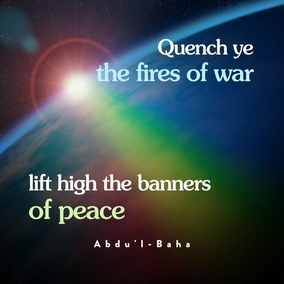
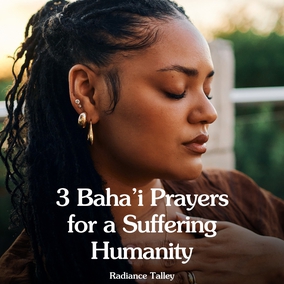

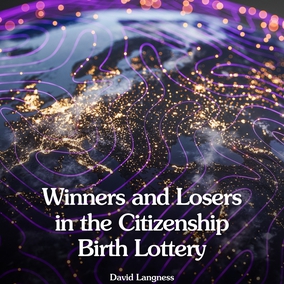
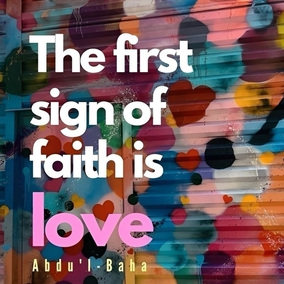
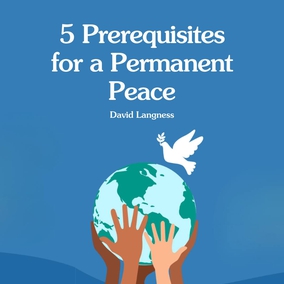



Comments
Sign in or create an account
Continue with Googleor